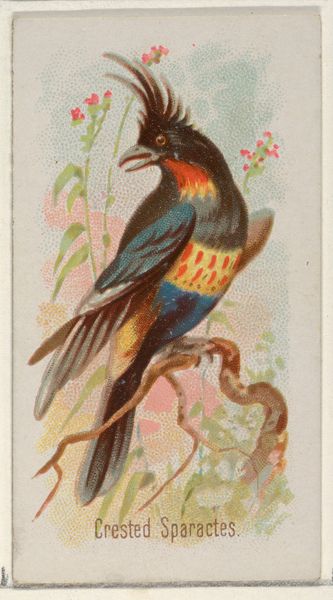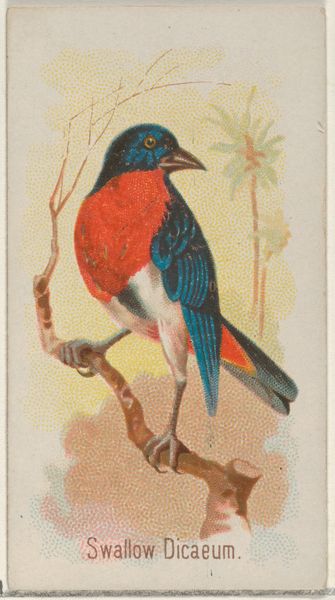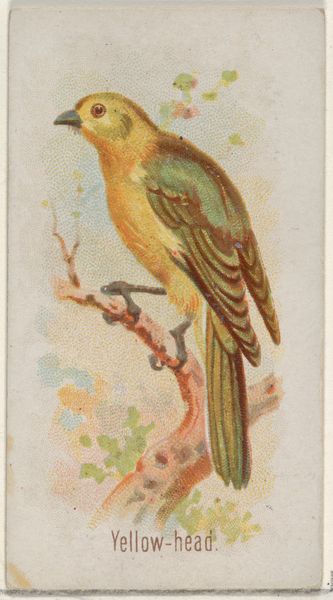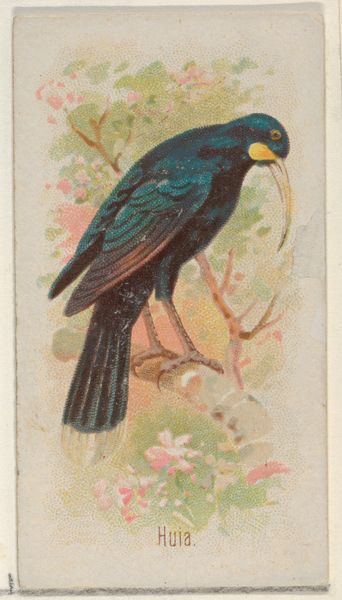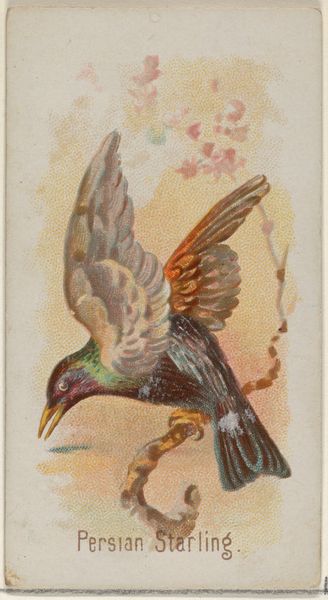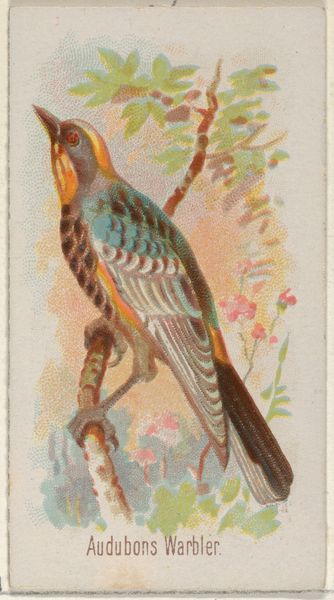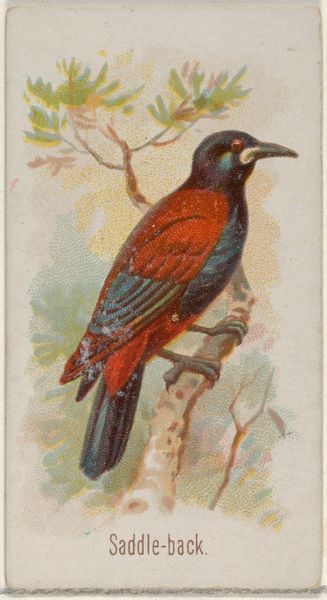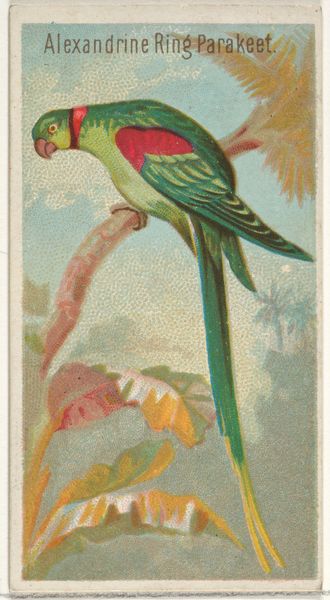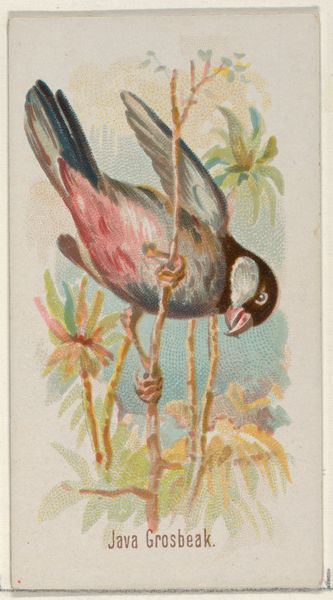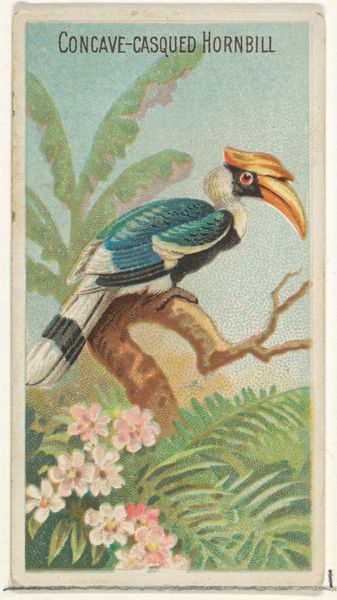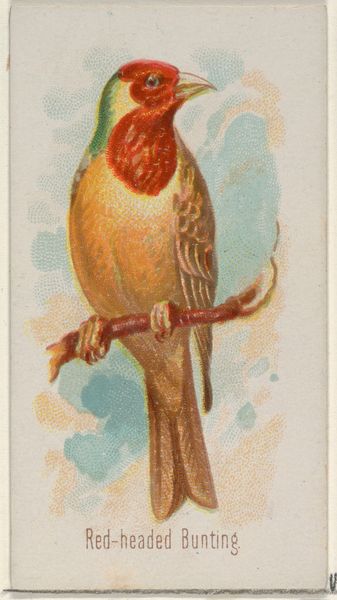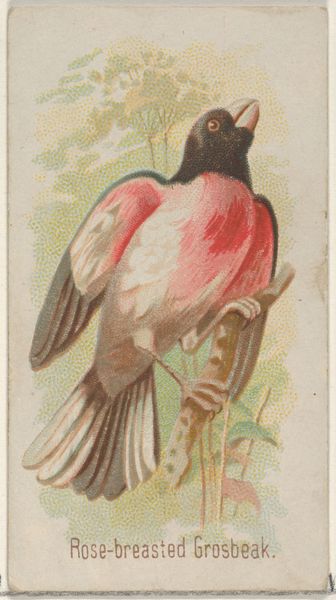
Azuvert, from the Song Birds of the World series (N23) for Allen & Ginter Cigarettes 1890
0:00
0:00
# print
#
bird
#
coloured pencil
#
watercolor
Dimensions: Sheet: 2 3/4 x 1 1/2 in. (7 x 3.8 cm)
Copyright: Public Domain
Curator: The image before us, “Azuvert,” from the Song Birds of the World series, was created around 1890 by Allen & Ginter as one of their cigarette cards. It's currently part of the collection at the Metropolitan Museum of Art. Editor: Immediately striking! The colors, though faded, possess a real vibrancy. The printing gives the bird's plumage this fantastic shimmering texture, almost metallic, perching delicately on its twig. I find the bird to be quite lovely. Curator: Indeed. These cards circulated widely, functioning as both collectibles and advertising. Allen & Ginter capitalized on the late 19th-century fascination with ornithology, incorporating elements of Japonisme into their design. Consider the flat planes of color, and the asymmetrical composition. The Azuvert is idealized, elevated. Editor: I’m compelled by the tangible aspects of the print. Cigarette cards! Think about the material realities: the mass production, the cheap card stock, the inky process depositing that hazy watercolor effect. The everyday ritual of smoking connected to the exoticism of this Azuvert. It highlights consumer culture during the Gilded Age and the power that advertising has. Curator: Certainly, the circulation is important. But, the symbolic meaning should also be considered: the “Azuvert,” stands for more than a pretty bird. The Victorians were great observers of the natural world, and a bluebird symbolized happiness and prosperity. So these images carried significant cultural weight, projecting ideals to consumers. The careful choice of what bird and blossom to depict could invoke very particular feelings or associations for the card's collector. Editor: But look at the labor embedded in these cards – from the factories producing the cigarettes and cards to the distribution networks carrying them across the country and around the globe. Consider how this commodification transforms the original source and the artform’s intention. What once lived in nature becomes bound up in circuits of capitalist production, enjoyed only momentarily by someone lighting up. Curator: Still, within that commodification, a memory persists. The exoticized Azuvert still sings, echoing across time as it holds within it that longing for the natural world. It reveals something profound about our connection with these symbols of natural beauty, regardless of how it has been mediated through manufacturing. Editor: I agree, a fascinating collision of industry and idealized imagery that complicates how we define 'high' art versus material culture. I still wonder how these kinds of small, cheap printed ephemera circulated so widely – how did these images define class, aspirations, desires, or even the simple enjoyment that they provided at the time. Curator: Yes, it definitely offers up a richer story than one might expect from something you once found inside a cigarette pack.
Comments
No comments
Be the first to comment and join the conversation on the ultimate creative platform.
